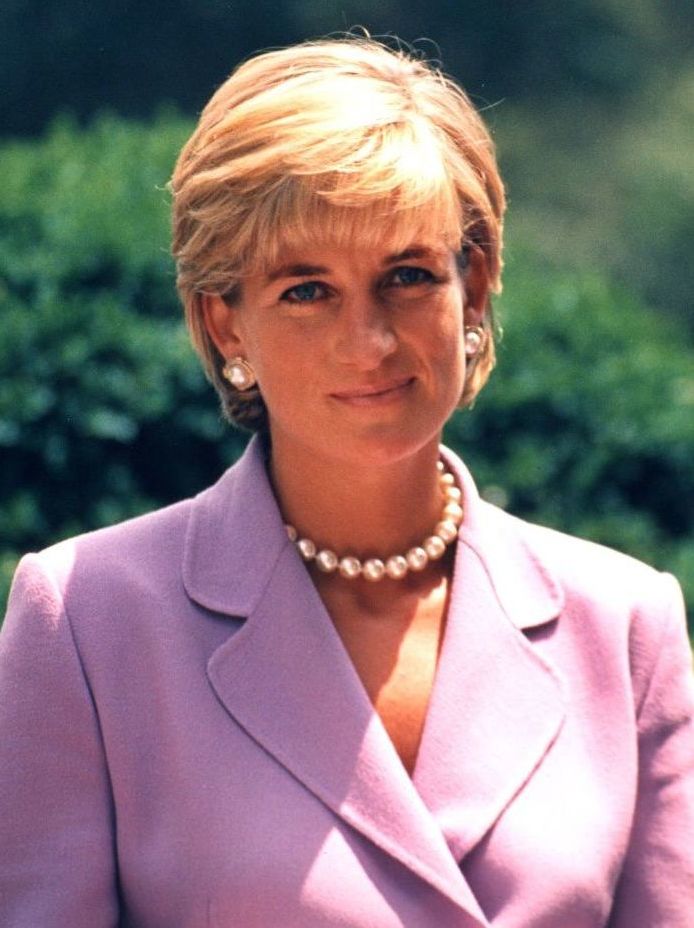
MonSef Dahman, a surgeon in the French Riviera town of Antibes, has spoken for the first time in nearly 24 years on how he and other doctors fought to save the life of the Princess of Wales, Diana, on August 31, 1997 when she had a fatal crash in Paris.
In an exclusive interview with Mail, he said, ‘The thought that you have lost an important person, for whom you cared personally, marks you for life.’
He recalled how he was summoned to the emergency department of the Pitié-Salpêtrière Hospital in Paris to attend to a ‘young woman’ who turned out to be the most famous in the world.
Dahman, 56, also recalled a chilling story of his own experience of the perverse iconography and unscrupulous monetising of the Princess, even after her death.
A Parisian by birth, Dahman would not have been in his home city, let alone on duty, that night were he not about to become a father for second time.
Every August the French capital empties of those citizens who can afford to spend a month in the country or by the sea. If it were not for foreign tourists, the City of Light would be a ghost town.
‘But I didn’t take a vacation that summer,’ he recalls to the Mail. ‘For the extremely simple reason that my wife was pregnant with my son (they already had a daughter). As a result, I worked all summer.’
And work he did — long, long hours like the junior doctors and surgeons in our own NHS. His shift that weekend had started at 8am on Saturday.
READ ALSO: Gas Explosion: Our brother died leaving behind four kids- Family of victim (VIDEO)
He was still on duty at 2am the following morning, ‘though of course it was not continuous activity. I did have moments of rest. In fact, if I remember correctly, it was a pretty easy day. I didn’t have to deal with anything too difficult.’
That would change — dramatically. The Mercedes in which Diana was travelling crashed in the Alma tunnel at approximately 12.23am. Owing to the severity of her resulting injuries, she received lengthy treatment by doctors at the scene.
She then suffered a cardiac arrest while being moved to an ambulance. After being revived, she was transported by that ambulance to Dahman’s hospital. She arrived there at 2.06am.
‘I was resting in the duty room when I got a call from Bruno Riou, the senior duty anaesthetist, telling me to go to the emergency room,’ Dahman recalls. ‘I wasn’t told it was Lady Diana, but [only] that there’d been a serious accident involving a young woman.
‘The organisation of the Pitié-Salpêtrière hospital was very hierarchical. So when you got a call from [such] a high-level colleague that meant the case was particularly serious.’ His rest room was only 50 metres from the accident and emergency department ‘And so I got there fairly quickly. And then I realised the true seriousness of things.’
He recalls: ‘My intern [his junior assistant] was in the room. But she was in a corner because she was a little overwhelmed by the gravity of the moment.’ Riou was also present.
‘That too was a sign of the special importance. And he was personally taking care of a lady who was lying on a stretcher, with a lot going on around her.’
Dahman, 33 at the time, was then informed that the unconscious figure on the stretcher was no less than Diana, Princess of Wales.
‘It only took that moment for all this unusual activity to become clear to me,’ he recalls with some understatement. ‘For any doctor, any surgeon, it is of very great importance to be faced with such a young woman who is in this condition. But of course even more so if she is a princess.’
Diana had been X-rayed on arrival at hospital. The resulting images of her chest showed she was suffering ‘very serious internal bleeding’. As a result, she underwent a thoracic drain — excess fluid being removed from her chest cavity.
But haemorrhaging persisted and Diana was receiving transfusions of O-negative blood held in the emergency room, as her blood group had not yet been established
At around 2.15am she suffered another cardiac arrest. The situation had grown more critical. More extreme intervention was needed.
As she underwent external heart massage, Riou asked Dahman to perform a surgical procedure. He was to do so while Diana was still lying on the stretcher in the emergency room.
This circumstance was ‘truly exceptional’ and an indication of how parlous her situation had become. ‘I did this (procedure) to enable her to breathe,’ Dahman explains. ‘Her heart couldn’t function properly because it was lacking in blood.’
As a result of this intervention, Dahman discovered that Diana had suffered a significant tear in her pericardium, which protects the heart.
The prognosis worsened. It was now 2.30am. A miracle was needed. Dahman and Riou were joined in the emergency room by Professor Alain Pavie, perhaps France’s top heart surgeon. He had been summoned from his bed at home. If anyone could save her, it was him.
Pavie decided that Diana must be moved into one of the hospital’s operating theatres. He suspected that the main source of her internal bleeding had not yet been found. Further surgical exploration was necessary.
It was this procedure that uncovered the most serious wound — a tear to Diana’s upper-left pulmonary vein at the point of contact with the heart. Pavie sutured the lesion.
The most significant physical damage had been repaired. But to no avail. Diana’s heart, which had stopped before the surgical exploration, would not restart. They were losing the battle to save her.
‘We tried electric shocks, several times and, as I had done in the emergency room, cardiac massage,’ says Dahman. ‘Professor Riou had administered adrenaline. But we could not get her heart beating again.’
The team continued these resuscitation efforts for a full and ultimately fruitless hour.
‘We fought hard, we tried a lot, really an awful lot. Frankly, when you are working in those conditions, you don’t notice the passage of time,’ says Dahman. ‘The only thing that is important is that we do everything possible for this young woman.’ He says he had felt hope at the start.
‘We had people brought to Pitié-Salpêtrière who were in a very poor state, more serious than Diana was when she arrived. It is one of the best centres in France for this type of trauma emergency. And we did save some of those people, which made us particularly happy and proud.
‘But that did not happen here. We could not save her. And that affected us very much.’
‘At 4am the team, led by Pavie, accepted that no more could be done to revive their patient. It was a ‘collegiate decision’, Dahman recalls. They ceased all resuscitation efforts. The extraordinary life of Diana, Princess of Wales, had come to an end.





















